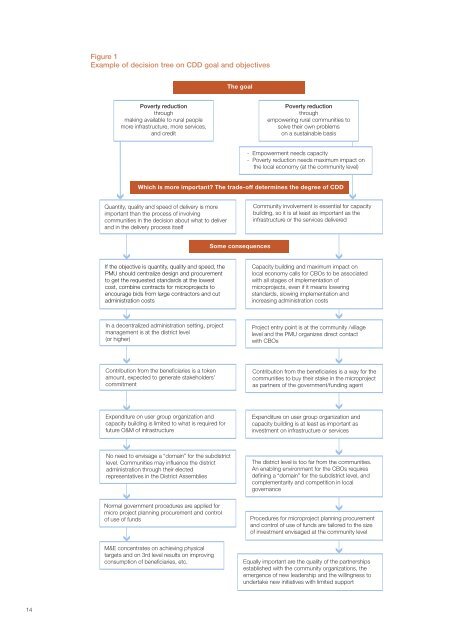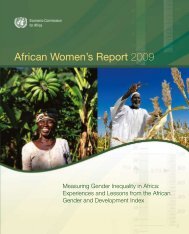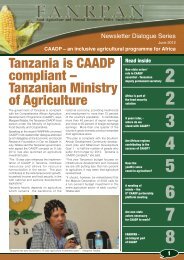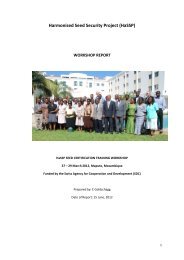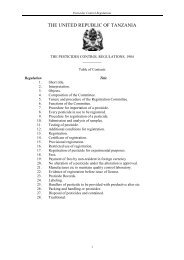Community-driven development decision tools for rural - IFAD
Community-driven development decision tools for rural - IFAD
Community-driven development decision tools for rural - IFAD
- No tags were found...
Create successful ePaper yourself
Turn your PDF publications into a flip-book with our unique Google optimized e-Paper software.
Figure 1Example of <strong>decision</strong> tree on CDD goal and objectivesThe goalPoverty reductionthroughmaking available to <strong>rural</strong> peoplemore infrastructure, more services,and creditPoverty reductionthroughempowering <strong>rural</strong> communities tosolve their own problemson a sustainable basis- Empowerment needs capacity- Poverty reduction needs maximum impact onthe local economy (at the community level)Which is more important? The trade-off determines the degree of CDDQuantity, quality and speed of delivery is moreimportant than the process of involvingcommunities in the <strong>decision</strong> about what to deliverand in the delivery process itself<strong>Community</strong> involvement is essential <strong>for</strong> capacitybuilding, so it is at least as important as theinfrastructure or the services deliveredSome consequencesIf the objective is quantity, quality and speed, thePMU should centralize design and procurementto get the requested standards at the lowestcost, combine contracts <strong>for</strong> microprojects toencourage bids from large contractors and cutadministration costsCapacity building and maximum impact onlocal economy calls <strong>for</strong> CBOs to be associatedwith all stages of implementation ofmicroprojects, even if it means loweringstandards, slowing implementation andincreasing administration costsIn a decentralized administration setting, projectmanagement is at the district level(or higher)Project entry point is at the community /villagelevel and the PMU organizes direct contactwith CBOsContribution from the beneficiaries is a tokenamount, expected to generate stakeholders’commitmentContribution from the beneficiaries is a way <strong>for</strong> thecommunities to buy their stake in the microprojectas partners of the government/funding agentExpenditure on user group organization andcapacity building is limited to what is required <strong>for</strong>future O&M of infrastructureExpenditure on user group organization andcapacity building is at least as important asinvestment on infrastructure or servicesNo need to envisage a “domain” <strong>for</strong> the subdistrictlevel. Communities may influence the districtadministration through their electedrepresentatives in the District AssembliesThe district level is too far from the communities.An enabling environment <strong>for</strong> the CBOs requiresdefining a “domain” <strong>for</strong> the subdistrict level, andcomplementarity and competition in localgovernanceNormal government procedures are applied <strong>for</strong>micro project planning procurement and controlof use of fundsM&E concentrates on achieving physicaltargets and on 3rd level results on improvingconsumption of beneficiaries, etc.Procedures <strong>for</strong> microproject planning procurementand control of use of funds are tailored to the sizeof investment envisaged at the community levelEqually important are the quality of the partnershipsestablished with the community organizations, theemergence of new leadership and the willingness toundertake new initiatives with limited support14


